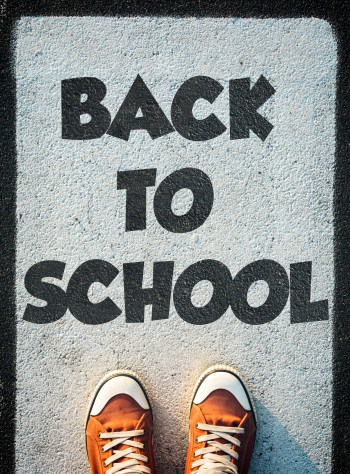Written by: Shauna Stubbs, RHYTTAC Principal Investigator, National Safe Place Network
Some young people approach the beginning of a new school year with excitement and anticipation. Perhaps they see this as a fresh start - an opportunity to experiment with identity development. Maybe they have a sense of confidence from previous experience that their desirable position in the social hierarchy of school is secure. Some could be finely tuned toward academic pursuits, eager to continue learning with the intention to avoid all the drama.
Others experience this ritual differently. School can be merciless. Many of our youth find themselves at higher risk than their peers for being bullied; having learning difficulties, substance abuse and mental health issues; and insecurity of resources to meet their basic needs.
On the other hand, school can be a strong protective factor for the young people whom we serve. Every year a student continues to attend school after 7th grade decreases risk of teen pregnancy, incarceration, and other significant stumbling blocks. And youth who are engaged in extra-curricular activities tend to improve their self esteem and develop positive social relationships.
So how can we help young people get the most benefit from school with the least risk of social trauma?
Social and Emotional Learning (SEL). While SEL curricula are often designed for school implementation, there are opportunities to adapt these life skills training modules for use in RHY groups. One example of an SEL life skill is mindfulness. Mindfulness is a way of being present and observing our experience while being aware that human beings are greater than our feelings, thoughts, and impulses. Developing mindfulness is also a strategy in trauma-informed care.
Positive Youth Development (PYD). The educational equivalent of what we know as PYD is Student-Centered Learning or Learner-Centered Education. This approach challenges young people to learn more than content. Students are encouraged to develop learning, critical thinking and problem-solving skills by practicing them. Youth make choices about focus areas that align with their interests. There are a number of ways this model can be implemented in schools to transform the educational environment, but individual youth in our care can benefit from opportunities to participate in decision making. If we remember that every question is an opportunity to practice development, RHY staff can offer support to youth in seeking their own answers.
Reviewing Lessons Learned. As young people in RHY programs are preparing to start a new school year, a life skills group could include discussions about previous successes, challenges or disappointments at school. With supportive guidance, youth can consider possible alternatives and outcomes and determine how they might handle that situation differently if it happened again. Young people in such a discussion can reality test their options with peers and learn from each other’s experience.
Providing Feedback. According to Frank Kros, President of the Upside Down Organization (UDO) and evidence-informed child advocate, feedback for youth that is most likely to build self-efficacy and self-esteem focuses on three domains: effort, strategy, and perseverance. Rather than telling young people they are smart, help them evaluate how pleasing or disappointing results were related to how hard they worked; what approach they used to read, study, take notes, etc.; and/or how persistent they were in overcoming obstacles and challenges.
Collaboration. Develop partnerships with schools and other service providers in your communities. Find ways to cooperate in building a local environment that fosters opportunity and supports learning. Work together to advocate for effective education policy at the city, county, school board, state and federal levels.
Follow these links to school-related resources available from National Safe Place Network:
RHYTTAC McKinney-Vento and RHYA Programs: Partners for Student Success
NSPN The ABCs of Bullying (available through DOT for members with Training Center access)
Follow the links below for additional resources:
http://youthvoiceproject.com/yvpbriefsummaryDec2013.pdf
http://rippleeffects.com/ripple-effects-whole-spectrum-intervention-system/
http://www.upsidedownorganization.org/
Recommended Reading for Youth:
http://pbskids.org/itsmylife/school/middleschool/print_books.html
http://pbskids.org/itsmylife/school/highschool/print_books.html





